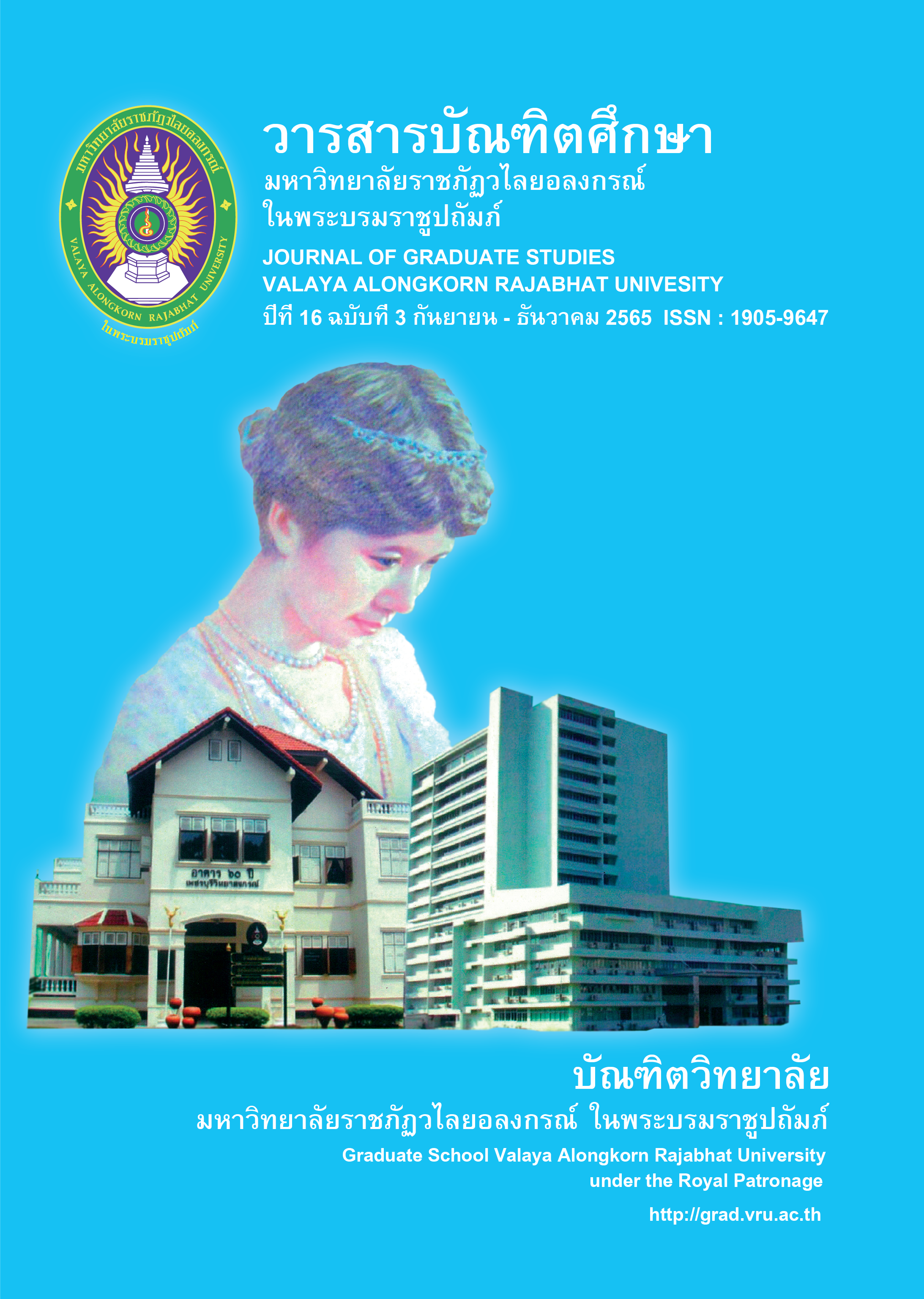DEVELOPMENT OF A BLENDED LEARNING MODEL USING COGNITIVE TOOLS AND INFOGRAPHIC DESIGN PROCESS TO ENHANCE VISUAL LITERACY AND CREATIVITY FOR ART EDUCATION STUDENTS
Main Article Content
Abstract
This research was a research and development design aims to 1) develop the learning model, 2) implement the learning model and 3) propose the learning model of blended Learning using cognitive tools and infographic design process to enhance visual literacy and creativity for Art education students. The samples were 30 Art education students. The research instruments were the questionnaire, semi-structured interview form, lesson plans based on the learning model, visual literacy test, visual literacy rubric, infographic rubric. Quantitative data were analyzed by descriptive statistics, t-test for dependent samples, and development score; qualitative data were analyzed using content analysis method.
The result found that 1) the learning model consists of three design activities: (1) Infographic Preparation, (2) Create Infographics and, (3) Publishing, and has five components: (1) Blended learning (2) Cognitive tools (3) Instructional approach of infographic design process (4) Media and learning resources and (5) assessment of learning outcomes, 2) the result from the implementation were as follows: 2.1) visual literacy posttest scores of the Art education student who studied with the blended learning model using cognitive tools and infographic design process to enhance visual literacy and creativity were significantly higher than the pretest scores at .05 level, 2.2) infographic scores of the Art education student were pass at very good level, and 2.3) students' opinions expressed after learning with the learning model was found that teaching and learning activities both in face to face and online classroom based on the learning model were beneficial to students and helped to strengthen their visual literacy, 3) the learning model validation result by 5 experts was 3.00 that appropriate level that can be used.
Article Details

This work is licensed under a Creative Commons Attribution-NonCommercial-NoDerivatives 4.0 International License.
บทความทุกเรื่องได้รับการตรวจความถูกต้องทางวิชาการโดยผู้ทรงคุณวุฒิ ทรรศนะและข้อคิดเห็นในบทความ Journal of Global of Perspectives in Humanities and Social Sciences (J-GPHSS) มิใช่เป็นทรรศนะและความคิดของผู้จัดทำจึงมิใช่ความรับผิดชอบของบัณฑิตวิทยาลัย มหาวิทยาลัยราชภัฏวไลยอลงกรณ์ ในพระบรมราชูปถัมภ์ กองบรรณาธิการไม่สงวนสิทธิ์การคัดลอก แต่ให้อ้างอิงแหล่งที่มา
References
Burry-Stock, J. A., Shaw, D. G., Laurie, C., & Chissom, B. S. (1996). Rater agreement indexes for performance assessment. Educational and Psychological Measurement. 56(2), 251-262.
Davies, D., Jindal-Snape, D., Collier, C., Digby, R., Hay, P., & Howe, A. (2013). Creative learning environments in education - A systematic literature review. Thinking Skills and Creativity, 8, 80-91.
Hattwig, D., Bussert, K., Medaille, A., & Burgess, J. (2013). Visual literacy standards in higher education: New opportunities for libraries and student learning. portal: Libraries and the Academy. 13(1), 61-89.
Hsin-Te Yeh, Y.-C. C. (2010). The influence of the instruction of visual design principles on improving pre-service teachers’ visual literacy. Computers & Education. 54(2010), 244–252.
Islamoglu, H., et al. (2015). Infographics: A new competency area for teacher candidates. Journal of Educational Sciences. 10(1), 32-39.
Kanjanawasee, S. (2013). thritsadī kānthotsō̜p bǣp dangdœ̄m [Theory of Traditional Test]. Bangkok: Faculty of Education. Chulalongkorn University.
Krejcie, R. V., & Morgan, D. W. (1970). Determining sample size for research activities. Educational and Psychological Measurement. 3(30), 607-610.
Krum, R. (2014). Cool Infographic: Effective Communication with Data Visualization and Design. John Wiley & Sons.
Matrix, S., & Hodson, J. (2014). Teaching with Infographics: Practicing New Digital Competencies and Visual Literacies. The Journal of Pedagogic Development. 4(2).
McTigue, E. M., & Flowers, A. C. (2011). Science visual literacy: Learners' perceptions and knowledge of diagrams. The Reading Teacher. 64(8), 578-589.
Office of National Economic and Social Development Council. (2016). phǣn phatthanā sētthakit læ sangkhom hǣng chāt chabap thī sipsō̜ng 2560 – 2564 [National economic and social development plan, 12th edition, 2017 – 2021]. Retrieved from http://www.nesdc.go.th
Piksoot, J. C. T. S. J. (2012). Developing Student’s Visual Literacy in a Virtual Modelling Environment. Paper presented at the eLearning and Software for Education, Bucharest.
Sadik, A. (2009). Improving pre-service teachers' visual literacy through flickr. Procedia Social and Behavioral Sciences 1 (World Conference on Educational Sciences 2009), 91–100.
Sharma, P. (2010). Blended learning. ELT journal. 64(4), 456-458.
Whitney, D. R., & Sabers, D. L. (1970). Improving essay examinations III: Use of item analysis. Iowa City: University of Iowa, University Evaluation and Examination Service (Technical Bulletin No. 11).
Yang, H. H. (2013). An Integrated Approach to Developing Visual Literacy. In S. K. S. C. e. al. (Ed.), Hybrid Learning and Continuing Education (pp. 219-231). USA: Springer.
Yeh, H., & Lohr, L. (2010). Towards evidence of visual literacy: Assessing pre-service teachers’ perceptions of instructional visuals. Journal of Visual Literacy. 29(2), 183-197.


